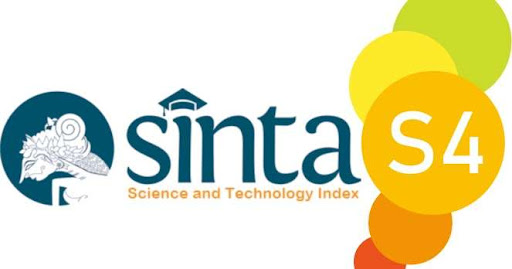Performance and Exhaust Emissions of Four Stroke Gasoline Engine Variations of Injection Duration Mapping with Ethanol Fuel E75
DOI:
https://doi.org/10.51747/energy.v15i1.15110Keywords:
Ethanol fuel (E75), Injection duration, Engine performance, Exhaust emissionsAbstract
Ethanol is a biofuel in which its storage and physical condition are almost the same as gasoline (fuel oil). It is still possible to drive a gasoline engine with ethanol in low concentrations. However, applying high concentrations to gasoline engines will require modifications, such as changing injection duration and compression ratio. This is done to get better performance and emissions than the use of gasoline fuel. In this study, the gasoline engine used was a 177cc single-cylinder four-stroke engine with E75 (75% Ethanol and 25% Pertalite), where the test engine was modified on the injection duration section with the replacement of standard ECU components into a programmable ECU. The replacement aims to facilitate changes in engine parameters, such as injection duration. In injection duration mapping, basic mapping values are added by 2%, 4%, 6%, and 8%. Then, the compression ratio is changed from 11:1 to 13:1. In comparison, testing is performed under standard machine conditions using Pertalite (E0). To test engine performance, a Prony brake dynamometer is used, while to test exhaust emissions are used exhaust gas analyser. E75 fuel use in the study resulted in torque and power increased by 30% and 19% with additional injection duration (8%) and (6%). However, in E75 use the duration of injection (2%) and (4%) decreased. This is related to AFR values, where injection duration (2%) and (4%) run on lean AFR. Then the SFC result increases, which is affected by the low heat value of ethanol fuel. And the use of ethanol E75 can reduce CO and HC emissions by 69.5% and 17% respectively.
References
[1] G. Kalghatgi, H. Levinsky, and M. Colket, ‘Future transportation fuels’, Progress in Energy and Combustion Science, vol. 69, pp. 103–105, Nov. 2018, doi: 10.1016/j.pecs.2018.06.003.
[2] E. Guerra, ‘Electric vehicles, air pollution, and the motorcycle city: A stated preference survey of consumers’ willingness to adopt electric motorcycles in Solo, Indonesia’, Transportation Research Part D: Transport and Environment, vol. 68, pp. 52–64, Mar. 2019, doi: 10.1016/j.trd.2017.07.027.
[3] E. Erdiwansyah et al., ‘Investigation of availability, demand, targets, and development of renewable energy in 2017–2050: a case study in Indonesia’, Int J Coal Sci Technol, vol. 8, no. 4, pp. 483–499, Aug. 2021, doi: 10.1007/s40789-020-00391-4.
[4] ‘Economic impact of crude oil supply disruption on social welfare losses and strategic petroleum reserves’, Resources Policy, vol. 77, p. 102689, Aug. 2022, doi: 10.1016/j.resourpol.2022.102689.
[5] C. Manochio, B. R. Andrade, R. P. Rodriguez, and B. S. Moraes, ‘Ethanol from biomass: A comparative overview’, Renewable and Sustainable Energy Reviews, vol. 80, pp. 743–755, Dec. 2017, doi: 10.1016/j.rser.2017.05.063.
[6] P. Iodice, A. Senatore, G. Langella, and A. Amoresano, ‘Effect of ethanol–gasoline blends on CO and HC emissions in last generation SI engines within the cold-start transient: An experimental investigation’, Applied Energy, vol. 179, pp. 182–190, Oct. 2016, doi: 10.1016/j.apenergy.2016.06.144.
[7] S. Xiao, H. Feng, X. Wang, X. Li, Z. Nan, and C. Yang, ‘Study on the Effects of Ethanol-gasoline Octane Number on Anti-knock Performance in Direct-injection Gasoline Engine’, Combustion Science and Technology, vol. 195, no. 3, pp. 530–556, Feb. 2023, doi: 10.1080/00102202.2021.1966774.
[8] A. Demirbas, M. A. Balubaid, A. M. Basahel, W. Ahmad, and M. H. Sheikh, ‘Octane Rating of Gasoline and Octane Booster Additives’, Petroleum Science and Technology, vol. 33, no. 11, pp. 1190–1197, Jun. 2015, doi: 10.1080/10916466.2015.1050506.
[9] H. Man et al., ‘How ethanol and gasoline formula changes evaporative emissions of the vehicles’, Applied Energy, vol. 222, pp. 584–594, Jul. 2018, doi: 10.1016/j.apenergy.2018.03.109.
[10] A. Setiyawan et al., ‘Production and Investigation of the 150 CC Engine Performance with Bioethanol from Manihot Esculenta Cassava and RON 92 Fuel Mixture’, IOP Conf. Ser.: Earth Environ. Sci., vol. 1381, no. 1, p. 012020, Aug. 2024, doi: 10.1088/1755-1315/1381/1/012020.
[11] N. F. O. Al-Muhsen, Y. Huang, and G. Hong, ‘Effects of direct injection timing associated with spark timing on a small spark ignition engine equipped with ethanol dual-injection’, Fuel, vol. 239, pp. 852–861, Mar. 2019, doi: 10.1016/j.fuel.2018.10.118.
[12] J. Shu, J. Fu, J. Liu, L. Zhang, and Z. Zhao, ‘Experimental and computational study on the effects of injection timing on thermodynamics, combustion and emission characteristics of a natural gas (NG)-diesel dual fuel engine at low speed and low load’, Energy Conversion and Management, vol. 160, pp. 426–438, Mar. 2018, doi: 10.1016/j.enconman.2018.01.047.
[13] S. A. Flamarz Al-Arkawazi, ‘The gasoline fuel quality impact on fuel consumption, air-fuel ratio (AFR), lambda (λ) and exhaust emissions of gasoline-fueled vehicles’, Cogent Engineering, vol. 6, no. 1, p. 1616866, Jan. 2019, doi: 10.1080/23311916.2019.1616866.
[14] X. Duan et al., ‘Experimental study the effects of various compression ratios and spark
Muhamad Khoirul Anam, Mohammad Lutfiyanto, Adi Mulyadi, Wisnu Kuncoro
Energy: Jurnal Ilmiah Ilmu-ilmu Teknik, Vol. 15 No. 1 (2025) 120
timing on performance and emission of a lean-burn heavy-duty spark ignition engine fueled with methane gas and hydrogen blends’, Energy, vol. 169, pp. 558–571, Feb. 2019, doi: 10.1016/j.energy.2018.12.029.
[15] Y. Zhuang and G. Hong, ‘Primary investigation to leveraging effect of using ethanol fuel on reducing gasoline fuel consumption’, Fuel, vol. 105, pp. 425–431, Mar. 2013, doi: 10.1016/j.fuel.2012.09.013.
[16] P. Iodice, G. Langella, and A. Amoresano, ‘Ethanol in gasoline fuel blends: Effect on fuel consumption and engine out emissions of SI engines in cold operating conditions’, Applied Thermal Engineering, vol. 130, pp. 1081–1089, Feb. 2018, doi: 10.1016/j.applthermaleng.2017.11.090.
[17] A. K. Thakur, A. K. Kaviti, R. Mehra, and K. K. S. Mer, ‘Progress in performance analysis of ethanol-gasoline blends on SI engine’, Renewable and Sustainable Energy Reviews, vol. 69, pp. 324–340, Mar. 2017, doi: 10.1016/j.rser.2016.11.056.
[18] V. Gnanamoorthi and G. Devaradjane, ‘Effect of compression ratio on the performance, combustion and emission of DI diesel engine fueled with ethanol – Diesel blend’, Journal of the Energy Institute, vol. 88, no. 1, pp. 19–26, Feb. 2015, doi: 10.1016/j.joei.2014.06.001.
[19] I. Schifter, U. González, L. Díaz, R. Rodríguez, I. Mejía-Centeno, and C. González-Macías, ‘From actual ethanol contents in gasoline to mid-blends and E-85 in conventional technology vehicles. Emission control issues and consequences’, Fuel, vol. 219, pp. 239–247, May 2018, doi: 10.1016/j.fuel.2018.01.118.
[20] C. Wang, S. Zeraati-Rezaei, L. Xiang, and H. Xu, ‘Ethanol blends in spark ignition engines: RON, octane-added value, cooling effect, compression ratio, and potential engine efficiency gain’, Applied Energy, vol. 191, pp. 603–619, Apr. 2017, doi: 10.1016/j.apenergy.2017.01.081.
[21] O. I. Awad, R. Mamat, M. M. Noor, T. K. Ibrahim, I. M. Yusri, and A. F. Yusop, ‘The impacts of compression ratio on the performance and emissions of ice powered by oxygenated fuels: A review’, Journal of the Energy Institute, vol. 91, no. 1, pp. 19–32, Feb. 2018, doi: 10.1016/j.joei.2016.09.003.
Downloads
Published
Issue
Section
License
Copyright (c) 2025 ENERGY: JURNAL ILMIAH ILMU-ILMU TEKNIK

This work is licensed under a Creative Commons Attribution-NonCommercial 4.0 International License.














